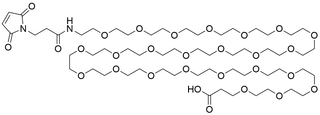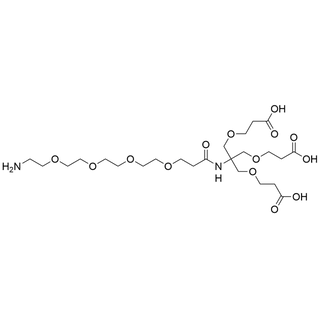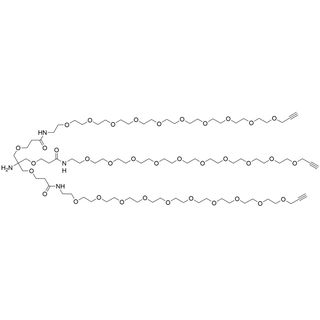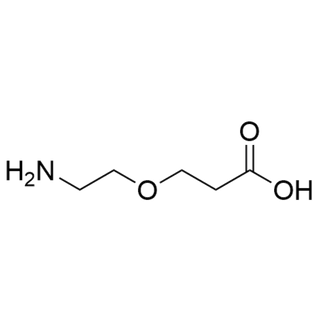PEG Linkers
As a contract research organization, we always need to buy PEG linkers and other biochemicals from different vendors to keep our research programs going. During this process, we ran into ongoing problems such as high prices, not being able to get large amounts and products that weren't always good quality from different suppliers. To fix these issues and strengthen our own research efforts, we started making these chemicals ourselves.
Over time, our wide-ranging experience and tech improvements have made us leaders in this field. We saw that scientists needed trustworthy top-notch products so we started our own line called PrecisePEG. With our tech know-how, PrecisePEG wants to become a key supplier of PEG linkers, ADC linkers, and other biochemicals to help with all kinds of research.
Our expert chemists make all our products in-house, which sets us apart from other sellers. This means we know the ins and outs of how they're made, so we can give you technical help if you need it.
What Sets Us Apart
-
We keep a stock of popular products in kilogram amounts, ready to help you scale up.
-
We take quality assurance . We check purity using several methods such as NMR analysis and HPLC with multiple detectors (UV-vis DAD, RI, ELSD CAD).
-
We also use LCMS and MALDI-TOF to make sure our products are as pure as possible.
-
We have a big stock of key ingredients (more than 10 kg) so we can make new linkers.
-
This means we can develop new products in less than 2 weeks.
Cut down on the environmental impact and carbon footprint linked to linker synthesis by using new technologies.
Bring game-changing products to market through team-ups and licensing deals with other companies.
Help universities and nonprofits by giving them lower prices and other perks to boost research and new ideas.
PEGylation has an influence on the properties of therapeutic molecules. This process attaches Polyethylene Glycol (PEG) chains to proteins, peptides, and antibody fragments to improve them. It boosts water solubility, cuts down on immunogenicity, makes drugs more stable, and keeps them in the bloodstream longer, among other benefits.
The old way of making PEGs through polymerization results in mixed batches. These mixtures make it hard to study and use PEGs. On the other hand, Precise PEG products are different. They're single molecules with set lengths specific molecular weights, and unique structures. We make these using our own special technology.
We provide a collection of more than 6,000 pure PEG linkers covering a wide variety of functional groups. These include Azide, Amine, Alkyne, DBCO, BCN, TCO, Activated Ester, Maleimide, and Biotin, among others.
Beyond our large stock, we also offer services to synthesize custom PEG linkers to fit the specific needs of individual projects.
Filter
Alcohol-PEG34-Alcohol
from $465.00
- Unit price
- / per
from $465.00
- Unit price
- / per
In stock
Alcohol-PEG35-Alcohol
from $465.00
- Unit price
- / per
from $465.00
- Unit price
- / per
In stock
Alcohol-PEG36-Alcohol
from $325.00
- Unit price
- / per
from $325.00
- Unit price
- / per
In stock
Alcohol-PEG37-Alcohol
from $465.00
- Unit price
- / per
from $465.00
- Unit price
- / per
In stock
Alcohol-PEG38-Alcohol
from $465.00
- Unit price
- / per
from $465.00
- Unit price
- / per
In stock
Alcohol-PEG39-Alcohol
from $465.00
- Unit price
- / per
from $465.00
- Unit price
- / per
In stock
Alcohol-PEG4-Alcohol
from $280.00
- Unit price
- / per
from $280.00
- Unit price
- / per
In stock
Alcohol-PEG40-Alcohol
from $465.00
- Unit price
- / per
from $465.00
- Unit price
- / per
In stock
Alcohol-PEG41-Alcohol
from $465.00
- Unit price
- / per
from $465.00
- Unit price
- / per
In stock
Alcohol-PEG42-Alcohol
from $385.00
- Unit price
- / per
from $385.00
- Unit price
- / per
In stock
Alcohol-PEG43-Alcohol
from $465.00
- Unit price
- / per
from $465.00
- Unit price
- / per
In stock
Alcohol-PEG44-Alcohol
from $385.00
- Unit price
- / per
from $385.00
- Unit price
- / per
In stock
Alcohol-PEG45-Alcohol
from $245.00
- Unit price
- / per
from $245.00
- Unit price
- / per
In stock
Alcohol-PEG46-Alcohol
from $540.00
- Unit price
- / per
from $540.00
- Unit price
- / per
In stock
Alcohol-PEG47-Alcohol
from $540.00
- Unit price
- / per
from $540.00
- Unit price
- / per
In stock
Alcohol-PEG48-Alcohol
from $325.00
- Unit price
- / per
from $325.00
- Unit price
- / per
In stock
Alcohol-PEG5-Alcohol
from $280.00
- Unit price
- / per
from $280.00
- Unit price
- / per
In stock
Alcohol-PEG6-Alcohol
from $280.00
- Unit price
- / per
from $280.00
- Unit price
- / per
In stock
Alcohol-PEG7-Alcohol
from $410.00
- Unit price
- / per
from $410.00
- Unit price
- / per
In stock
Alcohol-PEG8-Alcohol
from $565.00
- Unit price
- / per
from $565.00
- Unit price
- / per
In stock
Alcohol-PEG9-Alcohol
from $650.00
- Unit price
- / per
from $650.00
- Unit price
- / per
In stock
Amido Mal-PEG1-Acid
from $450.00
- Unit price
- / per
from $450.00
- Unit price
- / per
In stock
Amido Mal-PEG1-NHS Ester
from $642.00
- Unit price
- / per
from $642.00
- Unit price
- / per
In stock
Amido Mal-PEG12-Acid
from $475.00
- Unit price
- / per
from $475.00
- Unit price
- / per
In stock
Amido Mal-PEG12-NHS Ester
from $323.00
- Unit price
- / per
from $323.00
- Unit price
- / per
In stock
Amido Mal-PEG16-Acid
from $560.00
- Unit price
- / per
from $560.00
- Unit price
- / per
In stock
Amido Mal-PEG16-NHS Ester
from $342.00
- Unit price
- / per
from $342.00
- Unit price
- / per
In stock
Amido Mal-PEG2-Acid
from $390.00
- Unit price
- / per
from $390.00
- Unit price
- / per
In stock
Amido Mal-PEG2-NHS Ester
from $350.00
- Unit price
- / per
from $350.00
- Unit price
- / per
In stock
Amido Mal-PEG24-Acid
from $342.00
- Unit price
- / per
from $342.00
- Unit price
- / per
In stock
Amido Mal-PEG24-NHS Ester
from $371.00
- Unit price
- / per
from $371.00
- Unit price
- / per
In stock
Amido Mal-PEG3-Acid
from $742.00
- Unit price
- / per
from $742.00
- Unit price
- / per
In stock
Amido Mal-PEG3-NHS Ester
from $840.00
- Unit price
- / per
from $840.00
- Unit price
- / per
In stock
Amido Mal-PEG4-Acid
from $465.00
- Unit price
- / per
from $465.00
- Unit price
- / per
In stock
Amido Mal-PEG4-NHS Ester
from $715.00
- Unit price
- / per
from $715.00
- Unit price
- / per
In stock
Amido Mal-PEG45-Acid
from $690.00
- Unit price
- / per
from $690.00
- Unit price
- / per
In stock
Amido Mal-PEG45-NHS Ester
from $890.00
- Unit price
- / per
from $890.00
- Unit price
- / per
In stock
Amido Mal-PEG5-Acid
from $262.00
- Unit price
- / per
from $262.00
- Unit price
- / per
In stock
Amido Mal-PEG5-NHS Ester
from $228.00
- Unit price
- / per
from $228.00
- Unit price
- / per
In stock
Amido Mal-PEG6-Acid
from $250.00
- Unit price
- / per
from $250.00
- Unit price
- / per
In stock
Amido Mal-PEG6-NHS Ester
from $800.00
- Unit price
- / per
from $800.00
- Unit price
- / per
In stock
Amido Mal-PEG8-Acid
from $648.00
- Unit price
- / per
from $648.00
- Unit price
- / per
In stock
Amido Mal-PEG8-NHS Ester
from $475.00
- Unit price
- / per
from $475.00
- Unit price
- / per
In stock
Amine-PEG4-Amide-Tri(3-methoxypropanamide-PEG10-Propargyl) Methane HCl salt
from $510.00
- Unit price
- / per
from $510.00
- Unit price
- / per
In stock
Amine-PEG4-Amido-tri-(carboxyethoxymethyl)-methane
from $505.00
- Unit price
- / per
from $505.00
- Unit price
- / per
In stock
Amine-PEG8-Amido-tri-(carboxyethoxymethyl)-methane, HCl salt
from $505.00
- Unit price
- / per
from $505.00
- Unit price
- / per
In stock
Amine-Tri(3-methoxypropanamide-PEG10-Propargyl) Methane HCl salt
from $510.00
- Unit price
- / per
from $510.00
- Unit price
- / per
In stock
Amino-PEG1-Acid
from $750.00
- Unit price
- / per
from $750.00
- Unit price
- / per
In stock
You're viewing 144 of 1928 products
















































